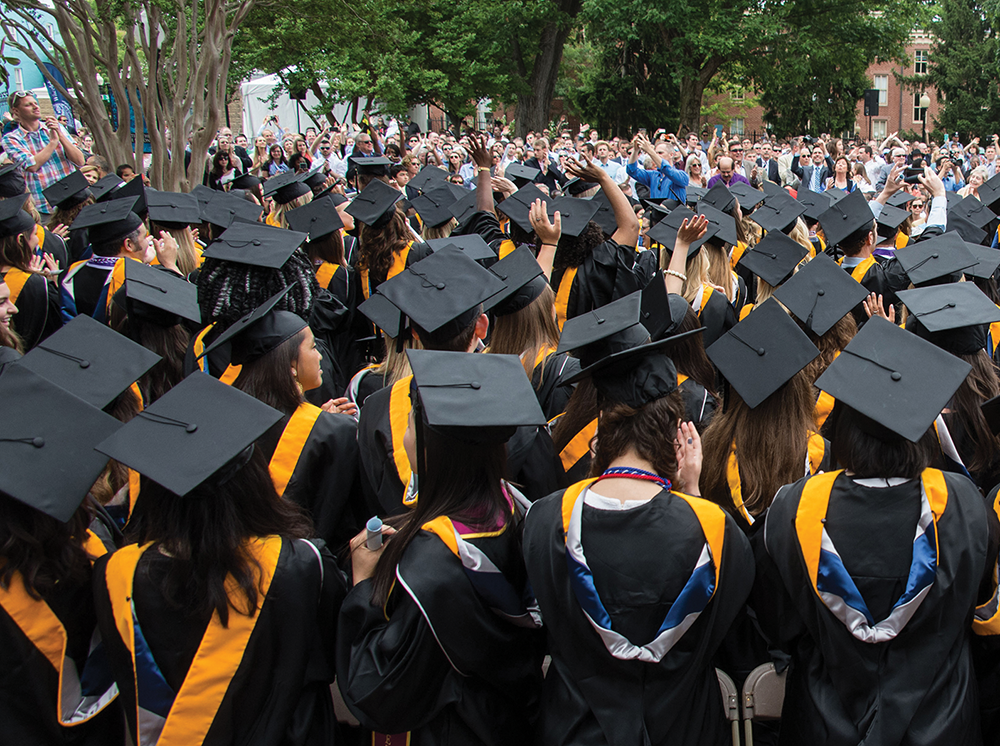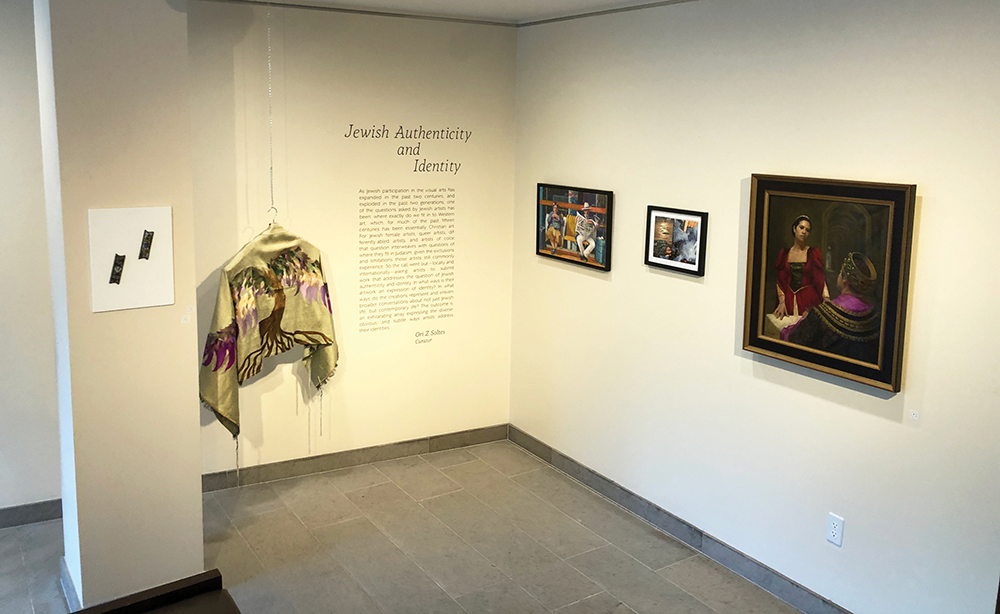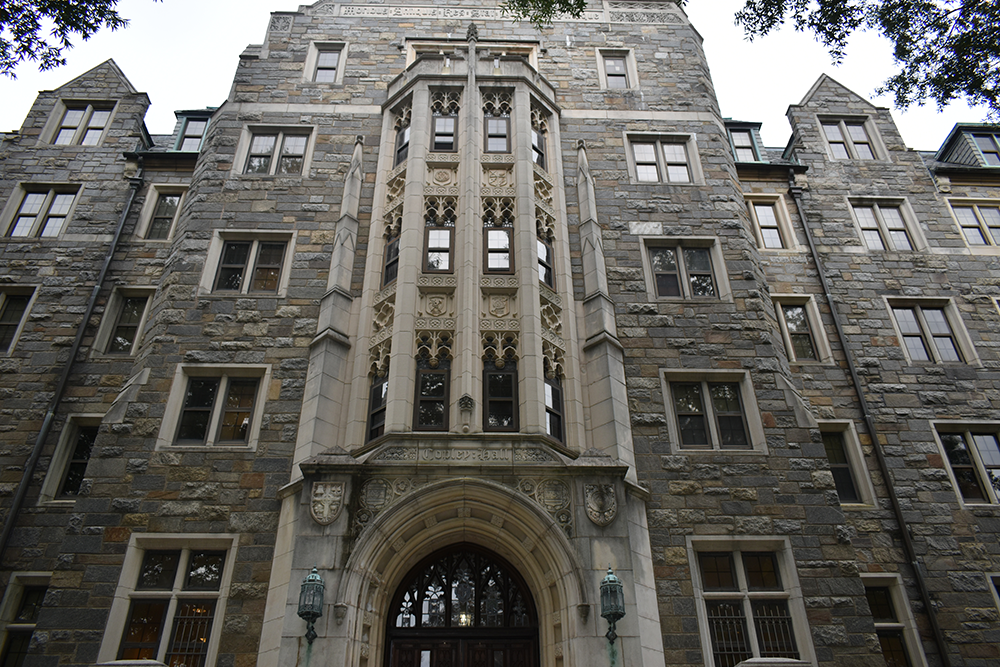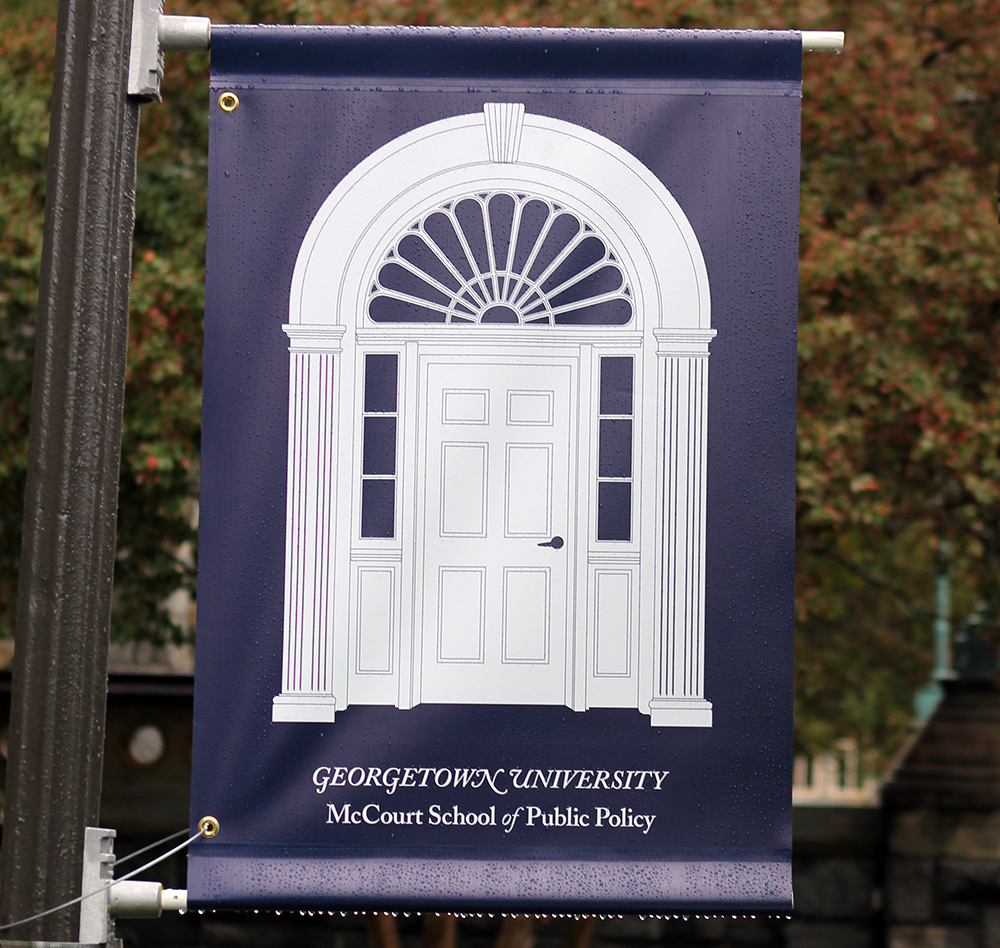As classes transitioned online this past semester, professors adapted to new software and sought to overcome technical difficulties to maintain a productive learning environment during the COVID-19 pandemic.
Amid growing concerns about COVID-19, Georgetown University President John J. DeGioia (CAS ’79, GRD ’95) announced in a universitywide email that all in-person classes would transition indefinitely to online-only coursework beginning March 16. Professors noted problems in areas like attendance, oral examinations and academic integrity, but saw how such technology also allowed for experimentation and creativity as seminars and labs were forced to adapt.
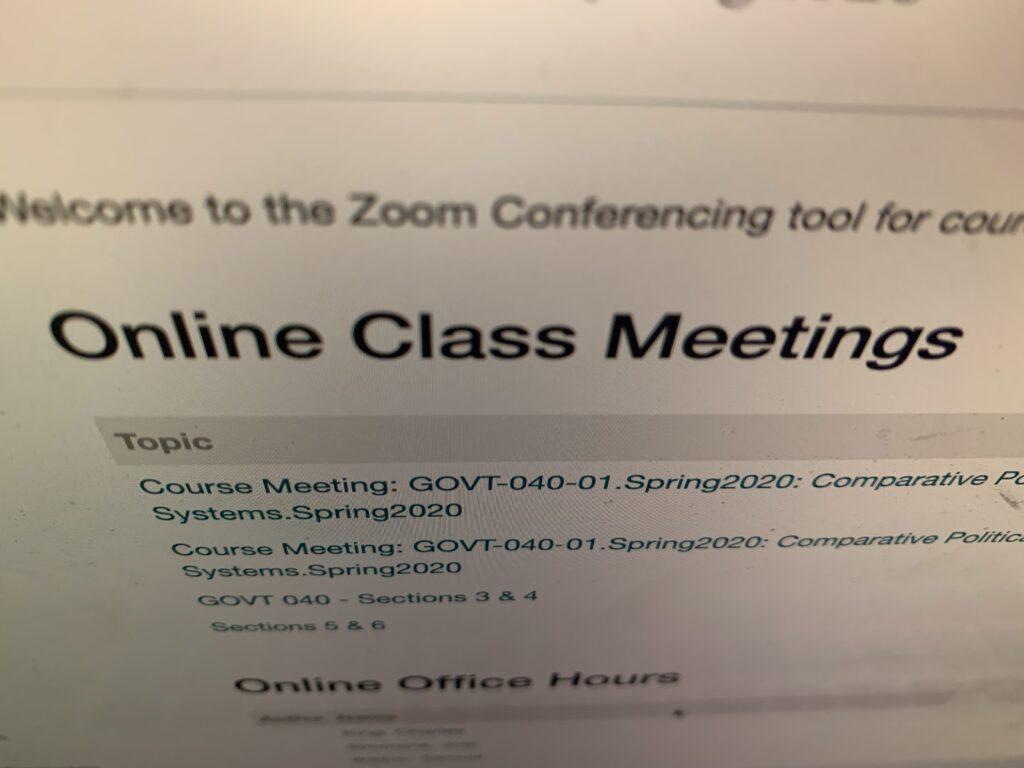
Trying to maintain instructional continuity, professors and students have relied on Zoom, a videoconferencing service that provides a venue for remote online meetings and mobile collaboration. Other applications like Proctorio, a surveillance program that detects suspicious behavior and displays a student’s probability of having cheated, have enabled professors to proctor examinations online.
Before adopting the Proctorio software, the faculty of languages and linguistics discussed the feasibility of the program and used practice tests to make sure the program could work, Ronald Leow, director of Spanish language instruction, wrote in an email to The Hoya.
“From our side, while we did encounter some issues like connectivity, being thrown out of the session and unable to re-enter unless a code was used, RAM memory, not doing the practice test before, we were also able to resolve all these issues with much flexibility,” Leow wrote.
Some professors have opted to prerecord lectures and switch to asynchronous learning, while others have continued to hold live lectures and seminar discussions. Language instruction over Zoom sacrifices the valuable in-person aspect of class students ordinarily benefit from, Leow wrote.
“With classes of 18, the instructor finds it quite challenging to promote a natural communicative setting in which new information is being shared, everyone participating fully, and the instructor in control of the activities,” Leow wrote. “One major benefit is the ability to record the class, which can then be viewed by anyone who was absent or interested in reviewing what took place during the session.”
Although transitioning to an online learning environment was new to both professors and students, student engagement has not been significantly influenced by the shift, according to Charles King, professor of government and international affairs and chair of the government department.
“I’ve been pretty amazed at how well my students have adapted, despite the very serious obstacles that I know many of them are facing,” King wrote. “Attendance is down, but that is to be expected, and in some other ways Zoom has improved things. Students who might have been uncomfortable speaking up in a large lecture hall are now participating more online.”
Lab-based classes such as biology and chemistry faced bigger challenges than discussion-based classes, according to chemistry department chair and professor Timothy Warren. After the university decided to move online, the chemistry department sent an iPad and Apple Pencil, a stylus optimized for iPad applications, to every professor and teaching assistant to equip faculty to continue problem-solving.
“As chemistry is such a visual science, it is crucial that we can show students in real time how we draw chemical structures and problem solve,” Warren wrote. “This new technology we quickly adopted allows us to more naturally communicate with our students by sketching, writing, and problem-solving in the same ways we would do in person by hand.”
Faculty also worked to provide video demonstrations of lab techniques and had their students analyze real data collected by teaching assistants to simulate experiments that would ordinarily be conducted in person. Additionally, online office hours have proven to be popular and could remain even once in-person instruction resumes, Warren wrote.
“Professor Diana Glick shared that she has more students attending office hours now that they are virtual – her ZOOM office is much bigger than her Georgetown office,” Warren said. “Offering virtual in addition to in-person office hours is definitely something she will do when we all return to campus.”
Despite the sudden transition to an online learning environment and changes in policy, professors adapted quickly to meet their students’ needs, according to King.
“I’ve been amazed at the rapidity with which my colleagues have adapted to this new environment,” King wrote. “There are always going to be challenges as professors quickly rework syllabi and expectations, as well as transition to a Zoom-based format, but people have done it with energy and creativity. I’ve been very proud to be a part of this community at this difficult time.”









